Ulyanovsk Aviation Museum
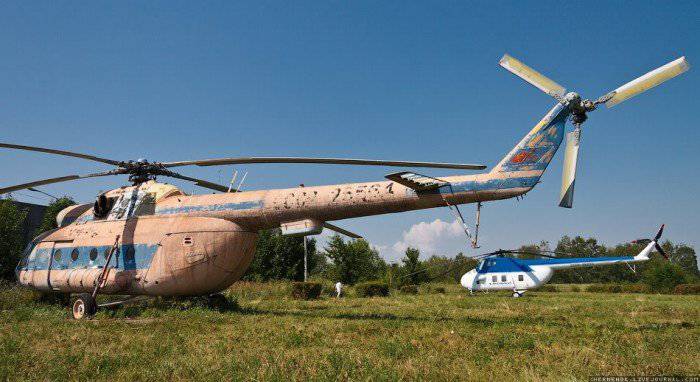
1.
2. An-14 "Bee" (according to the NATO codification: Clod - "Cob") - the Soviet light transport aircraft, intended to replace the An-2, made the first flight of 14 in March 1958 of the year. The aircraft had a short run up and mileage during landing and was designed for operation from unprepared unpaved sites.
An-14 equipped with two piston radial engines Ivchenko AI-14РФ. An-14 is very stable in flight, and can be controlled by any pilot after several hours of training. It was operated mainly by the USSR Air Force as a connected aircraft. A number of An-14 is still in operation.
3. Mass production began in the 1966 year, ended in the 1972 year. It was built 340 aircraft. An-14 could not replace the more successful An-2, which was massively produced before the 1992 year and is still being produced piece by piece. An-14 was developed on the basis of An-28, the modification of which is still being produced in Poland by the PZL-Mielec plant, and in Ukraine on the basis of it the An-38 was developed.
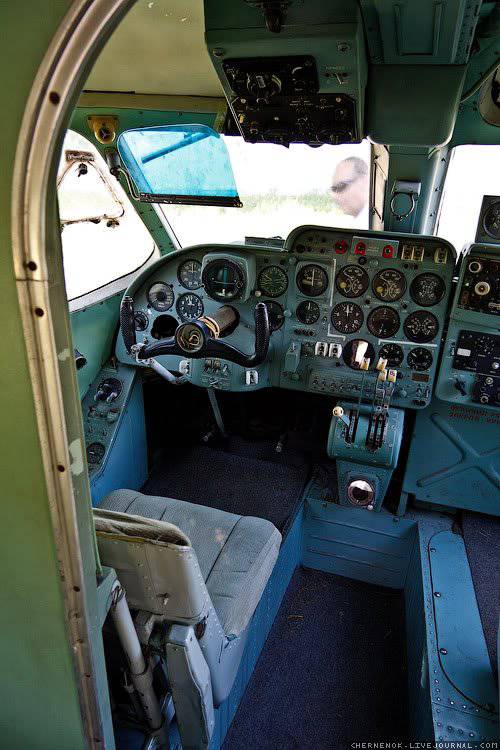
4. I liked this plane! When will private aviation become available in Russia? In America, Cessna can be bought for Dolar 30000, and for us with this money you can only buy a normal car.
5. An-24 (according to the NATO codification: Coke - "Coca") - passenger turboprop aircraft for lines of small and medium length. Flight range: 3000 km. Cruising speed: 490 km / h. Maximum take-off weight: 21 T. Equipped with two AI-24 2 series turboprop engines, AI-24T (Ivchenko) series with AB-72, AB-72T propeller of variable pitch. An-24 was produced from 1959 to 1979 year. It was released more than 1000 such aircraft, more than 300 operated.
On 6 September 2011, as a result of catastrophes and serious accidents, 149 An-24 type aircraft were lost, in which a total of 2034 people died. In addition, the 4 man died as a result of 33 attempting to capture or hijack An-24 aircraft. One of the last serious accidents involving An-24 occurred on August 8 2011 in the city of Blagoveshchensk, where, due to a thunderstorm, the board did not reach the runway, landing 200 meters away from it. As a result, injuries of varying severity were 10 people. The plane fell off the plane, the fuselage is seriously damaged. Restoration of the machine is not subject.
6. Mielec M-15 - jet agricultural aircraft, developed and produced in Poland in 1970-ies by order of the USSR. He remains the only jet agricultural aircraft and the only jet biplane. For its very strange look and howl of a jet engine, it received the nickname "Belphegor" after the demon Belfegor.
7. Here is such a flying "freak"
8. "Let L-410 Turbolet" - a versatile twin-engine aircraft for local airlines (IAL), which replaced the An-2. The first aircraft of foreign production, released on Soviet airways. Other names: L-410, Years, Years L-410, Turbolet, Cheburashka, Czech, Elk.
On 12, January 2011, in various flight accidents, 92 type L-410 vehicles were lost. In accidents, 364 people died.
9. Mi-1 (Hare - according to NATO classification) is a Soviet multi-purpose helicopter developed by the Mil Design Bureau at the end of the 1940-s. The first Soviet serial helicopter.
Originally designated GM-1 (Helicopter Mil-1). The first flight of the Mi-1 made in September 1948 year. In 1951, the year was put into trial operation. Mass production was carried out in 1954 — 1960, in total 2680 machines were built.
Interesting Facts:
1) Mi-1 was the first Soviet serial helicopter.
2) One Mi-1XX helicopter, made in a deluxe version, was used by the President of Finland Urho Kekkonen. [6]
3) Once, when Stalin was resting at his summer cottage in the mountains near Lake Ritsa (Abkhazia), Mi-1 landed on a small platform near his house. After such a demonstration, the leader (who had previously doubted the advantages of the helicopters) ordered that the designers be given money for the further development of these machines.
4) During the second international helicopter sport competition in 1973, world publications went around the photo of the Mi-1 with exhaust plume plume and the signature “Russian helicopter fluff-down”. The cause of the smoke was a cold engine.
5) Mi-1 starred in the film "Striped Flight"
6) Mi-1 starred in the film “Dima Gorin's Career”, 1961 year.
7) Pilot bike: Among other things, the helicopter had one design flaw - the cockpit doors that opened against the course of the movement. The pilot opened the door in flight (throw a bullhead, inspect the ground below), which caused the oncoming flow to swing open, and if the pilot tried to cover it, the pilot also opened it, which did not contribute to further successful continuation of the flight.
10. The swashplate is a mechanism for controlling the rotor of helicopters, autogyros and convertoplanes. The swashplate allows you to control the angular position of the helicopter, thereby adjusting the angle of pitch and roll. The control principle is based on changing the cyclic pitch of each blade of the rotor, that is, changing the pitch of the rotating blades depending on their angle of rotation in the main rotation. The forward tilt of the helicopter (pitch angle) and sideways (roll angle) occurs due to the moment of forces due to the difference in lift forces developed by the rotor blades and from the angular velocity of the gyroscopic precession.
11.
12. The aircraft empennage - the aerodynamic surfaces of the aircraft, ensuring its longitudinal and ground stability and its control. It is usually located in the tail section, sometimes in the forward fuselage. In this case, we see a T-shaped.
13. Mi-8 (B-8, product "80", according to NATO codification: Hip) - Soviet / Russian multi-purpose helicopter developed by the design bureau of M. L. Mil at the beginning of the 1960-s. It is the most massive twin-engined helicopter in the world, and also included in the list of the most massive helicopters in stories aviation. Widely used for many civilian and military tasks.
One hour spent in the air, Mi-8, costs about a thousand dollars in 1 (per 2011 g).
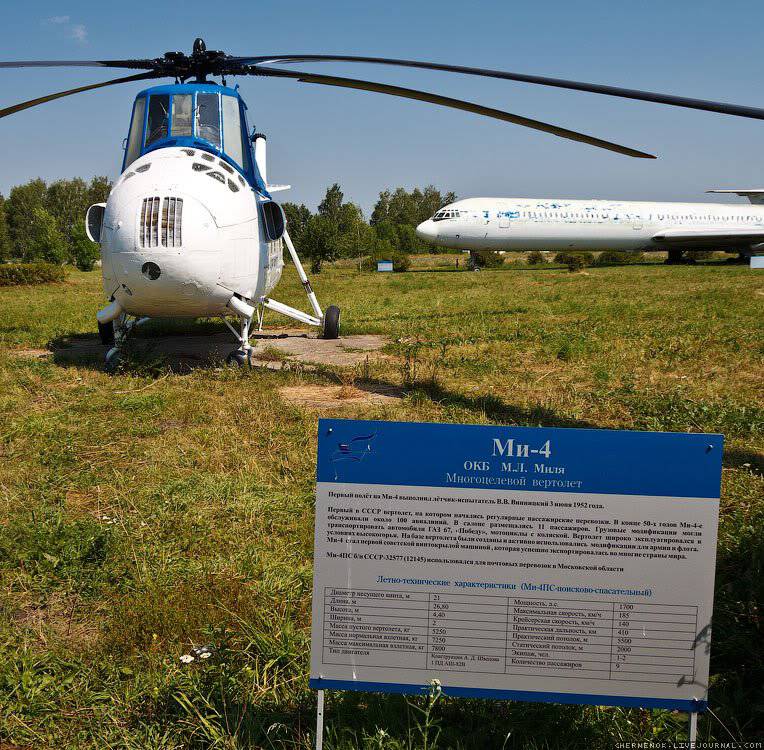
14. Mi-4 (according to NATO classification: Hound - “Hound”) - a multi-purpose Soviet helicopter, developed by the Mil Design Bureau in the early 1950-s.
15. The Mi-4 has set 7 world records. At the World Exhibition in Brussels, the helicopter was awarded a gold medal. Delivered for export to 30 countries of the world. Under the license, more than 500 units were manufactured in China (under the symbol Z-5 (“Chi-5”)).
16. IL-62 (according to NATO codification: Classic) - a passenger aircraft for airlines of very large length, developed in the Design Bureau. Ilyushin in the early 1960-s. The first flight made 2 January 1963. In operation with 1967. It was produced serially in 1966 — 1995. All were released 277 aircraft. The last but one board (2357711 s / n) was built in the 2004 year, for the government of Sudan, the latter at the moment - in the 2009-m for the Ministry of Defense of the Russian Federation.
17. Features IL-62:
1) The design feature of the aircraft is a small fourth two-wheeled rear landing gear used to prevent the aircraft from tipping over when parked and taxiing. The layout of the aircraft is such that the center of gravity of an empty aircraft is behind the main landing gear.
2) Despite its size and take-off weight, the IL-62 does not have a booster system. Steering and ailerons are controlled only by the muscular strength of the pilots or the electric autopilot steering gears. This decision was made possible thanks to the above-mentioned features of aircraft weighing, in which a large area of rudders is not required for take-off and leveling.
3) IL-62 was the first domestic jet aircraft, which was applied reverse thrust engines.
18. Mi-2 (according to NATO classification: Hoplite) is a Soviet multi-purpose helicopter developed by the Mil Design Bureau in the beginning of the 1960-s. Widely used to perform many civil and military tasks. In 1965, mass production was launched in Poland. Before the end of production in 1992, more than 5400 units were built. Even now, Mi-2 takes part in tenders, competing with its successors Ka-226 and Ansat.
19. Mi-6 (according to the classification of NATO - Hook ("Hook" - literally translated from English.)) - a heavy military transport helicopter.
In the second half of the 1950s, the Luna mobile missile systems were put into service in the USSR, and a greater capacity helicopter was needed for their transfer. MI-6 - the world's first serial production helicopter, equipped with two turboprop engines with a free turbine. Its layout is recognized as a classic. The Mi-6 helicopter is the most heavy-lifting at that time.
20. Automatic skew here will be more serious
21. IL-18 (according to NATO codification: Coot - “Prostak”) is a passenger aircraft for medium-haul flights, made according to the four-engine turboprop low-wing plan with single tail plumage.
According to January 19 2010, 100 IL-18 aircraft were lost, 2352 people died in the crashes.
As international statistics show, most of the IL-18 disasters of many foreign air carriers are related to the fact that the airliner, due to its unpretentiousness, is operated in obviously unfavorable conditions, when maintenance and dispatching flight support are far from ideal. Standards of allowable load and weather conditions under which take-off and landing are acceptable are also not always met. As a result, in the case of IL-18, the resource of which is already close to the maximum allowable, both the risks associated with equipment and, indirectly, the risks of human factors are great.
22. Tupolev TB-1 (ANT-4), G-1 - Soviet bomber. The world's first serial all-metal heavy twin-engine monoplane bomber. The aircraft was developed in 9 months and made in metal in the 1925 year.
The serial copy of TB-1 (ANT-4) without armament - made in 2-x copies for a record flight Moscow - New York. The historic flight for the USSR was launched on 8 on August 1929 of the year, but was interrupted by an emergency landing in the taiga near Chita. The plane was broken, but the crew was not injured and returned to Moscow where the 23 August 1929 of the year started again. The crew consisted of commander S. A. Shestakov, co-pilot F. E. Bolotov, navigator B. V. Sterligov and D. V. Fufayev made the flight Moscow-Omsk-Khabarovsk-Petropavlovsk-Kamchatsky-Attu-Seattle-San Island Francisco - New York total length of 21242 km of them 7950 km above the water. Flight time was 137 flight hours. On the section from Khabarovsk to Seattle, the wheeled chassis was replaced by a float. The floats were taken from the South-1 aircraft and lengthened by the 0,4 meter due to the greater mass.
23. Tu-124 (according to NATO codification: Cookpot - “Pan”) is a Soviet passenger aircraft for medium-sized airlines that can accommodate up to 56 passengers. The Tu-124 is actually a smaller copy of the previously developed Tu-104, and both types are similar in appearance, but differ in size and in the design of some units. At the Tu-124, for the first time in the world, turbofan engines were used for passenger aircraft, which differed from the previously used turbofan engines with higher efficiency. This aircraft was designed to replace the aging IL-14 on local routes, but was quickly replaced in serial production by a more successful deep modification of the Tu-134 (the original name is Tu-124А), with reduced noise in the passenger compartment due to engine transfer from the wing root on the tail of the fuselage.
Over the years of operation, 15 planes of the Tu-124 type were lost, which accounted for 9% of the aircraft released - twice as low as the Tu-104. The robust and reliable design often helped save the lives of passengers in cases of forced landings, the most famous case of which is when the Tu-124 with its engines off (running out of fuel) managed to land on the Neva in the center of Leningrad, and no one died.
24. The Tu-116 (Tu-114D) or 116 Aircraft were modifications of the Tu-95 - specially converted from a bomber passenger aircraft for long-haul flights of the USSR leadership, built in case of an unforeseen delay in the production of the first Tu-114.
There is a legend that Nikita Sergeevich Khrushchev, who planned to use the Tu-116 for a visit to Cuba, abandoned this idea when he learned that the passenger hatch of the aircraft is located in the rear lower part of the fuselage, under the tail, like the Yak-40.
The only remaining copy is in the main branch museum of the history of civil aviation in Ulyanovsk.
25. Screw with variable pitch.
The pitch of the propeller is one of the main technical characteristics of the propeller or propeller, depending on the angle of attack of its blades during their circular motion in a gas or liquid medium.
The pitch of the screw is the distance traveled progressively by the screw screwed into the solid medium for one complete revolution (360 °). It is in tangential dependence on the angle of inclination of the blades relative to the plane perpendicular to the axis of the screw. Measured in units of distance per revolution. The greater the screw pitch, the greater the volume of gas or liquid that captures the blades, however, due to an increase in counteraction, the greater the load on the engine and the lower the screw rotation speed (revolutions). The design of modern propellers and propellers provides for the ability to change the inclination of the blades without stopping the unit.
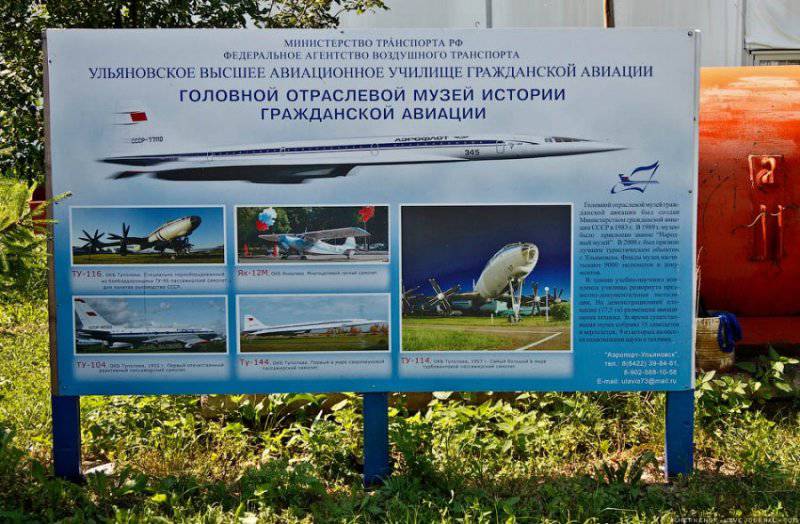
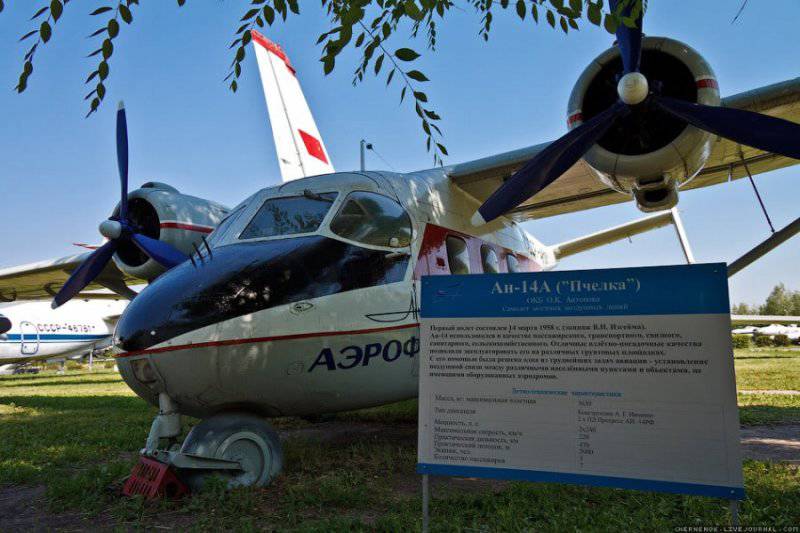
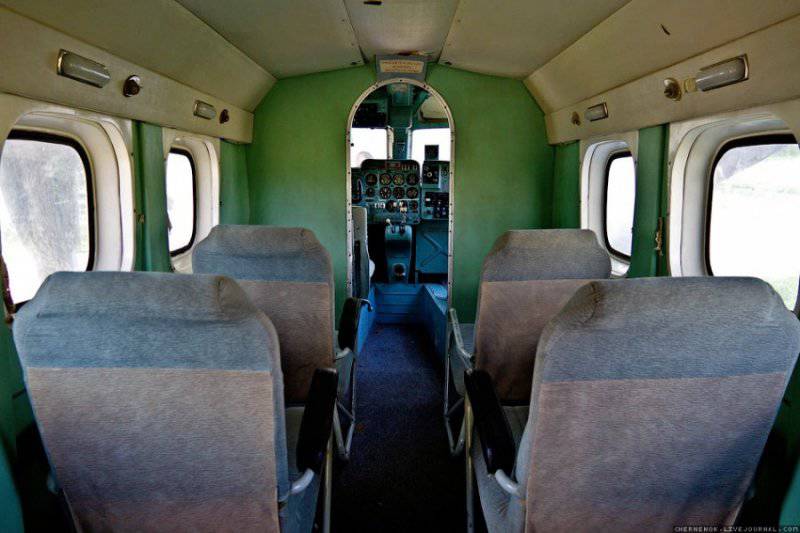
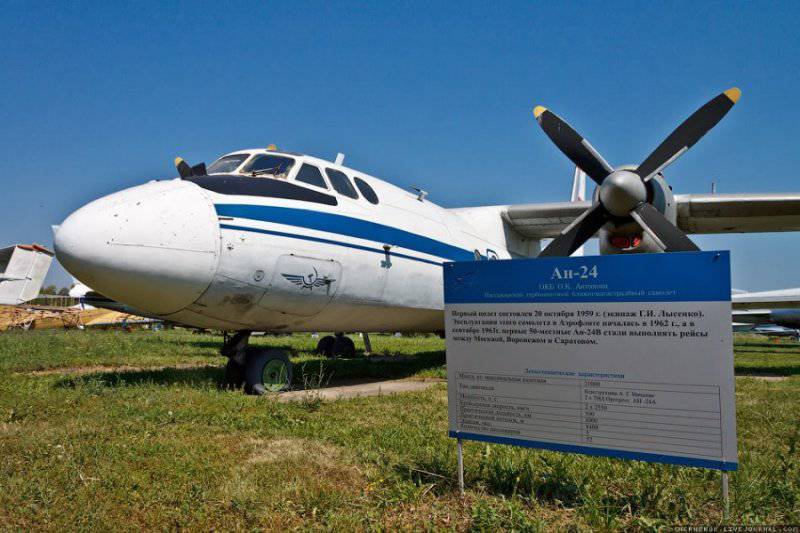
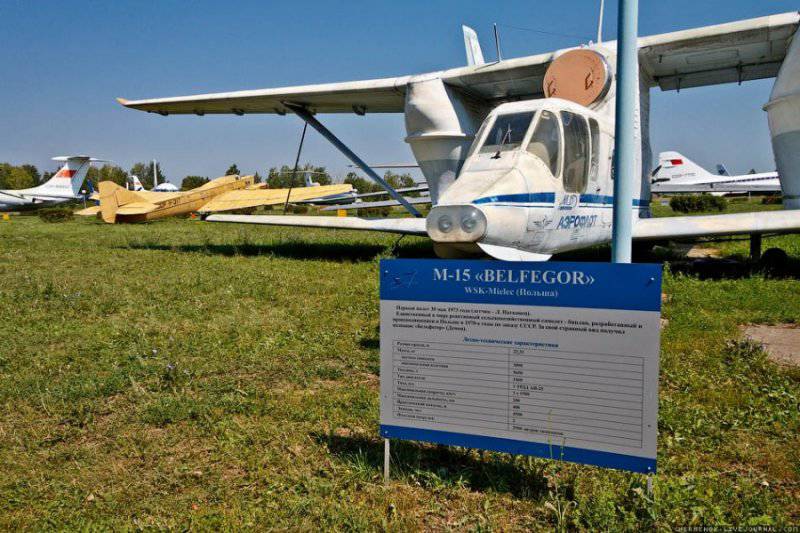
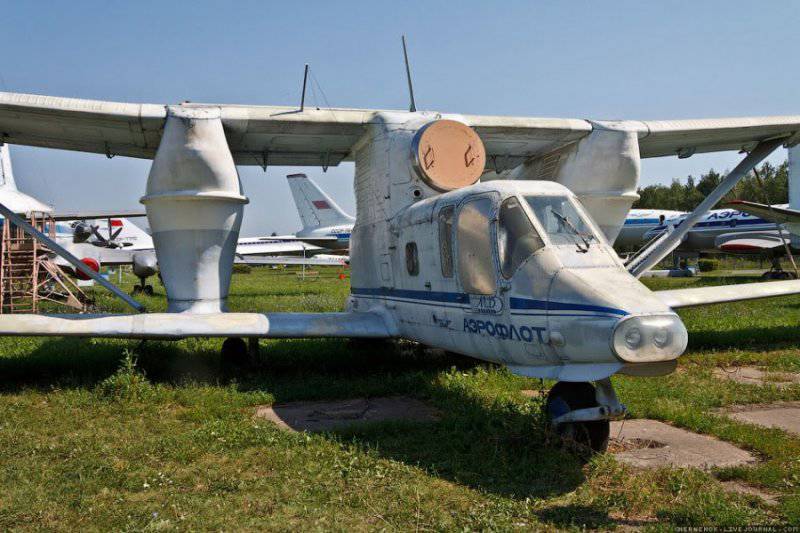
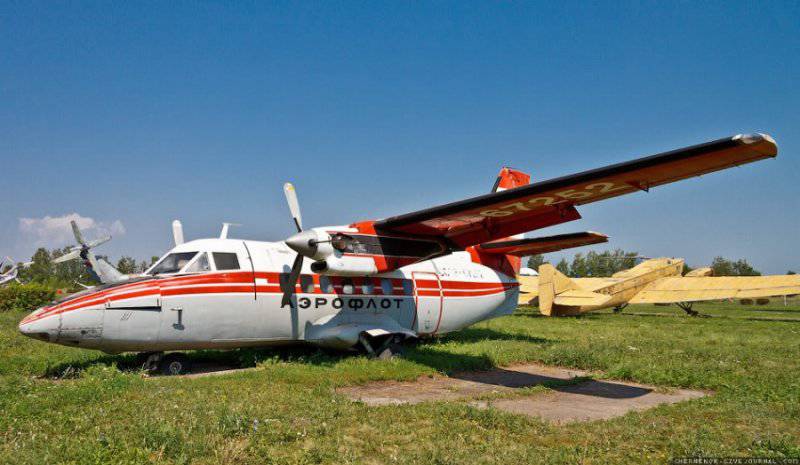
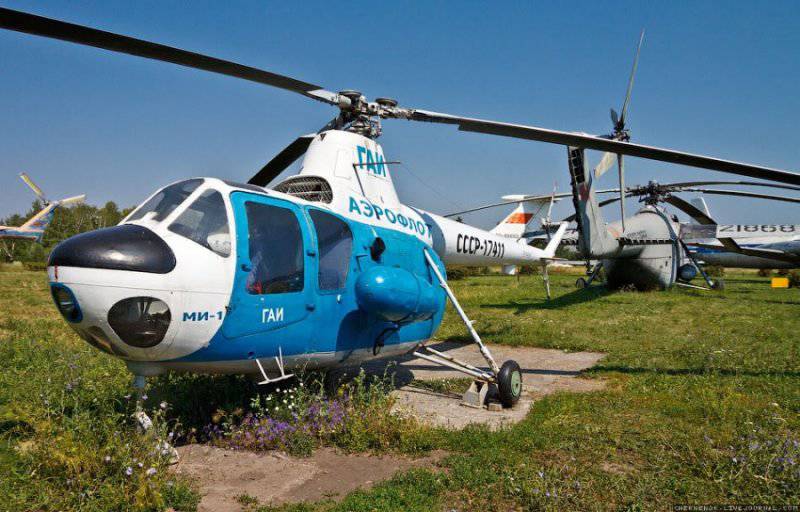
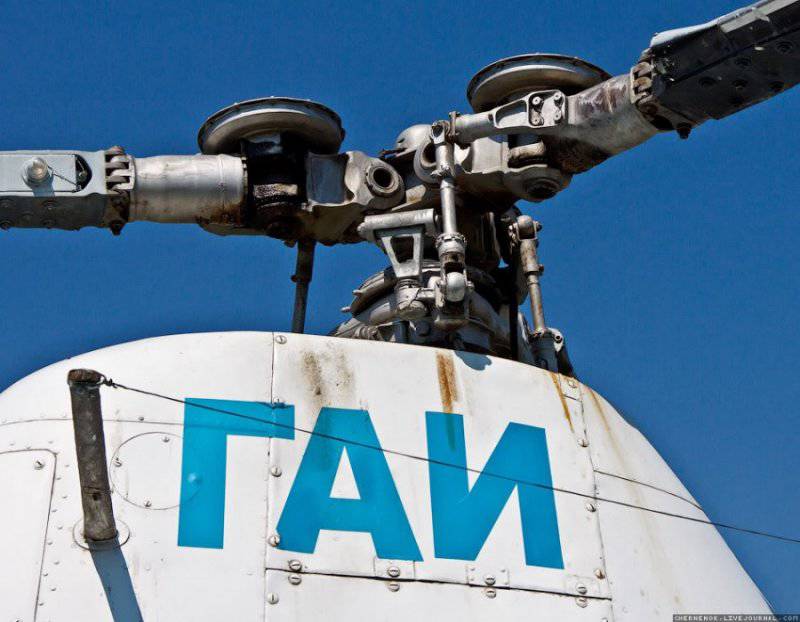
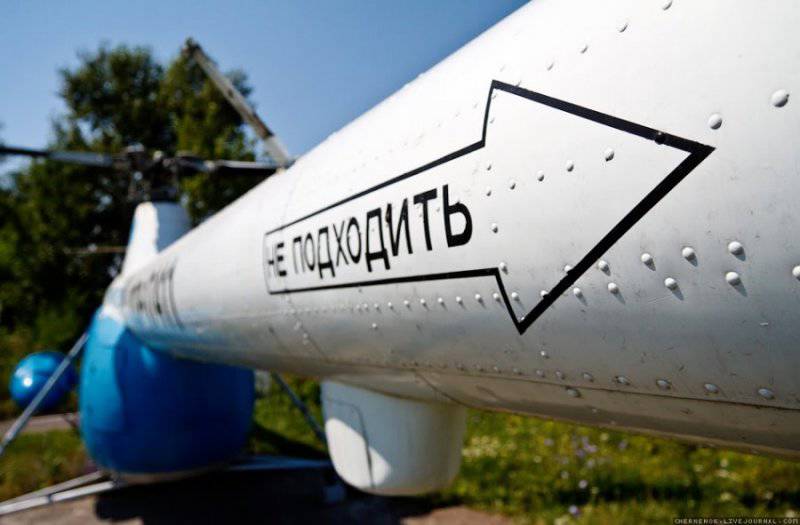
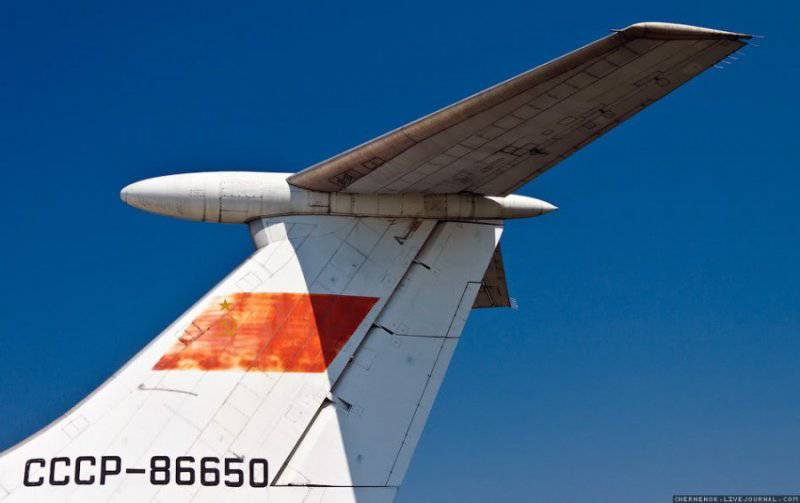
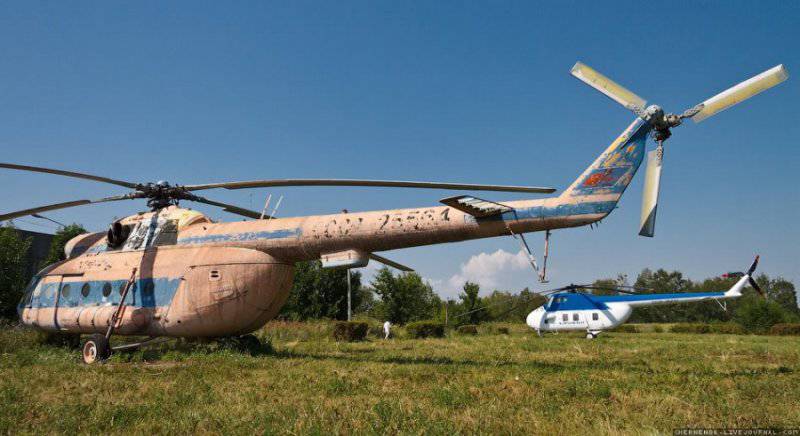
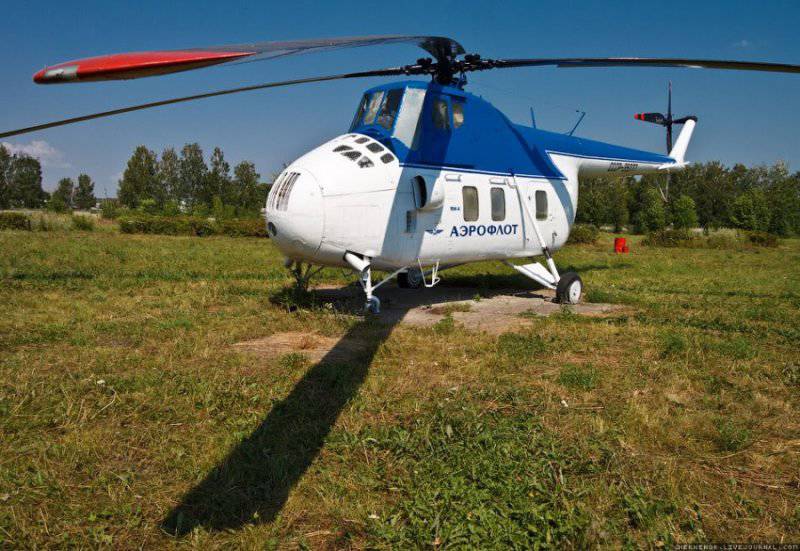
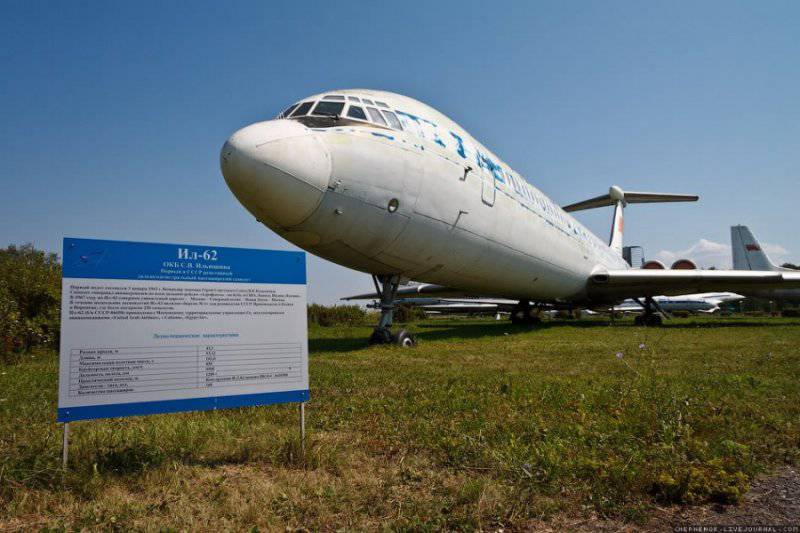
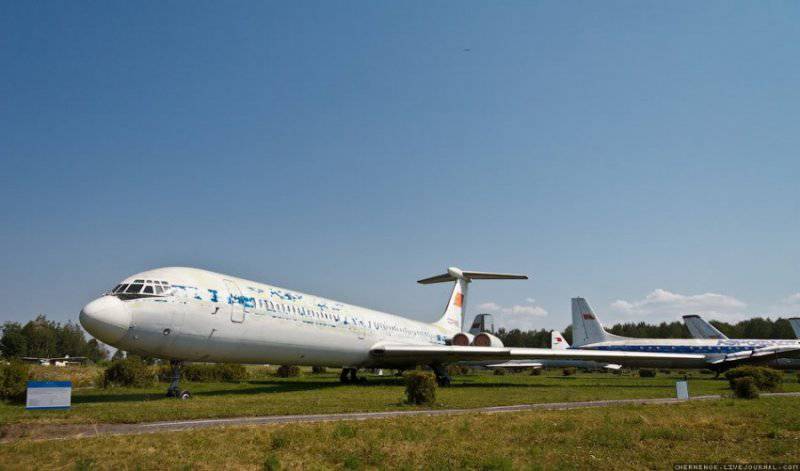
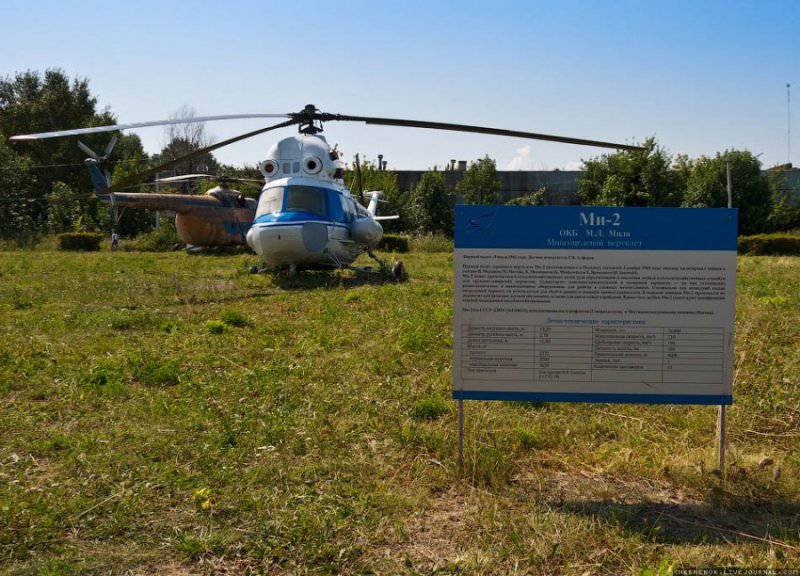
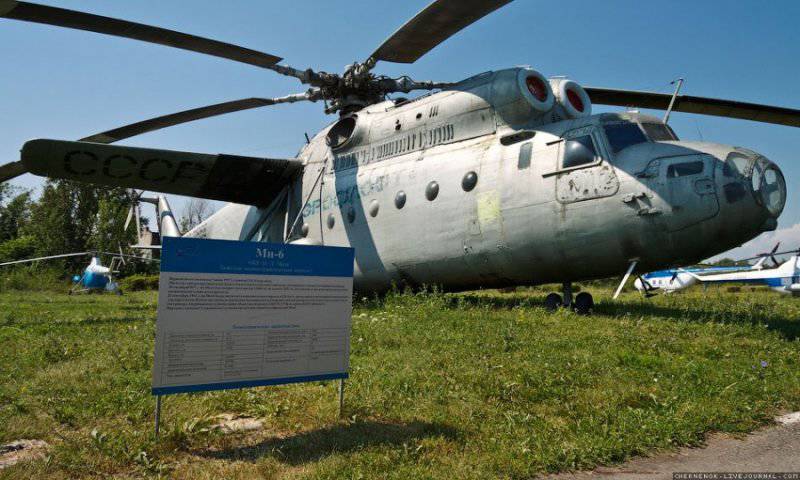
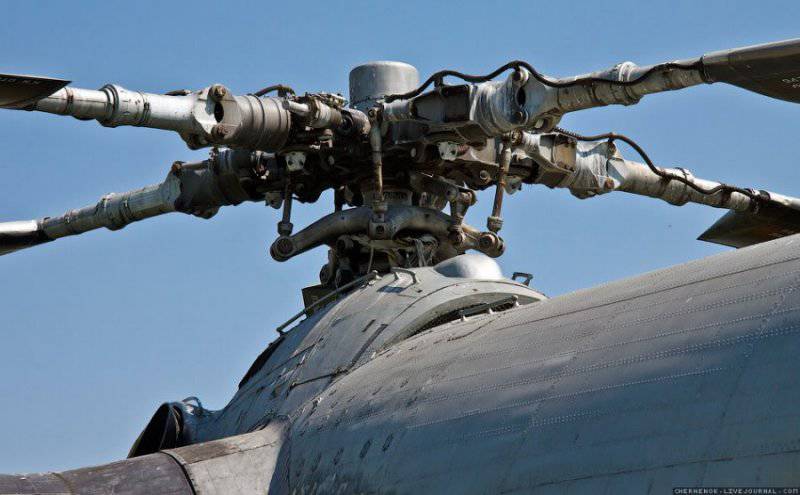
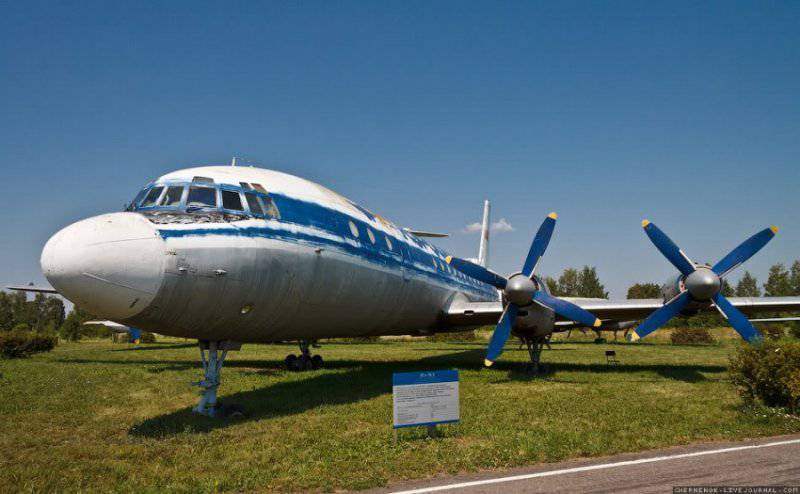
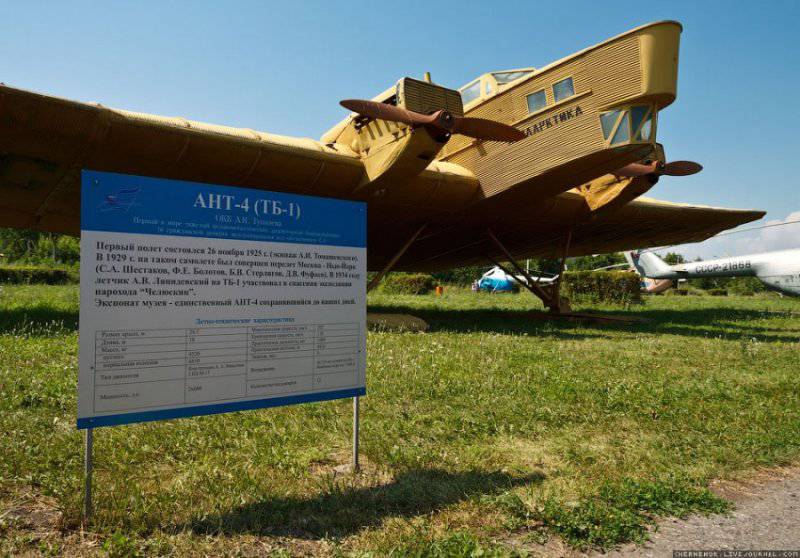
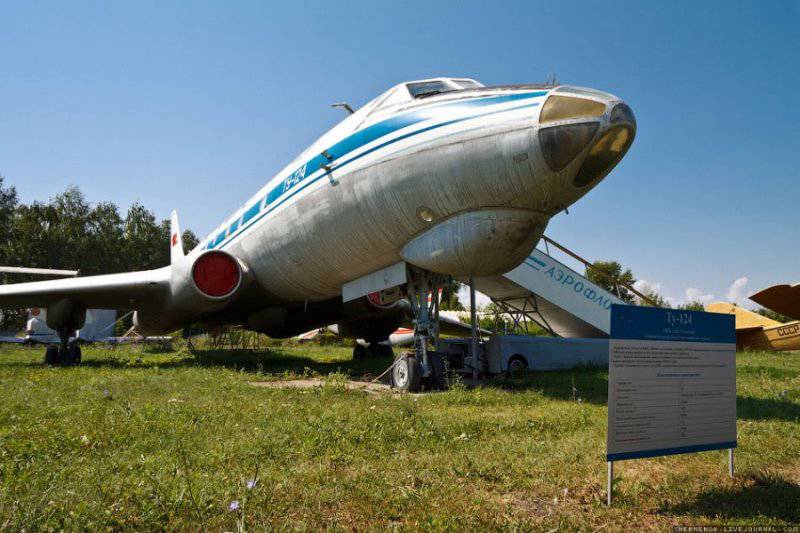
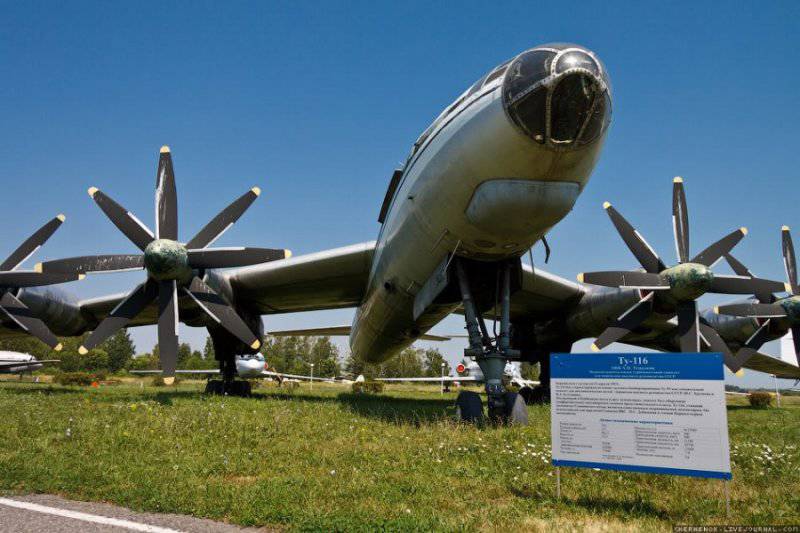
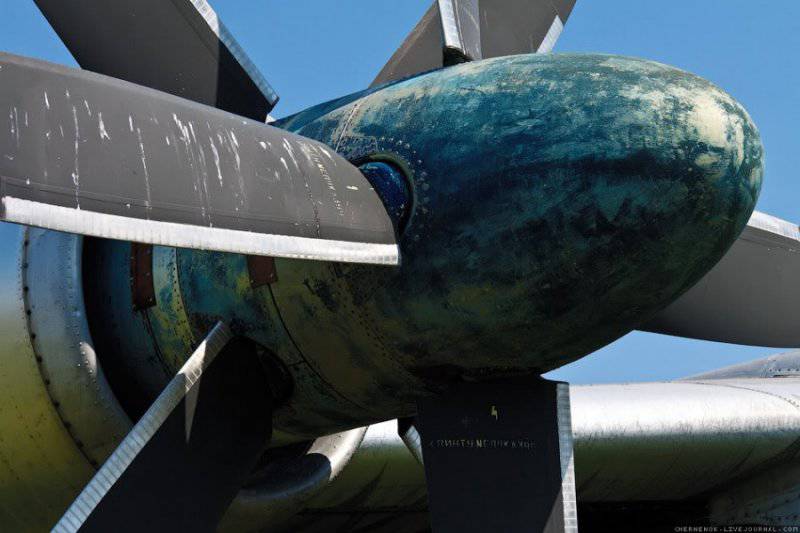
Information